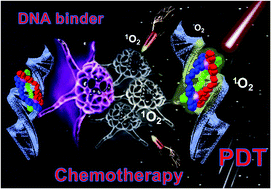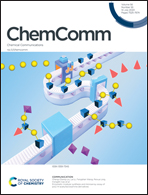Lighting up metallohelices: from DNA binders to chemotherapy and photodynamic therapy
Abstract
The design of novel agents that specifically target DNA and interrupt its normal biological processes is an attractive goal in drug design. Among the promising metallodrugs, metal-directed self-assembled metallohelices with defined three-dimensional stereochemical structures display unique structure-inherent and unprecedented noncovalent targeting abilities towards DNA, resulting in excellent anticancer or antibiotic activities. A newly burgeoning hotspot is focusing on lighting them up by embedding luminescent metal ions as the vertices. The photoactive metallohelices that combine strong interactions toward DNA targets and efficient 1O2 quantum yield may provide new motivation in diagnostic and photodynamic therapy (PDT) areas. This perspective focuses on research progress on metallohelices as DNA binders and chemotherapeutic agents, and highlights recent advances in fabricating luminescent examples for PDT. The relative assembly strategies are also discussed and compared. Finally, perspectives on the future development of the lit-up metallohelices are presented.



 Please wait while we load your content...
Please wait while we load your content...